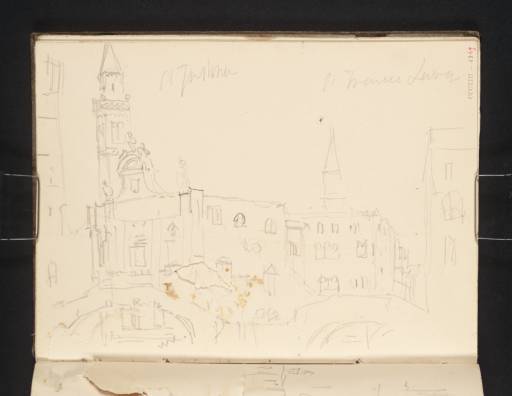References
How to cite
Matthew Imms, ‘The Church of Santa Giustina, Venice, at the Junction of the Rio di Santa Giustina and Rio di San Giovanni Laterano, with the Campanile of San Francesco della Vigna Beyond 1840 by Joseph Mallord William Turner’, catalogue entry, September 2018, in David Blayney Brown (ed.), J.M.W. Turner: Sketchbooks, Drawings and Watercolours, Tate Research Publication, December 2019, https://www

